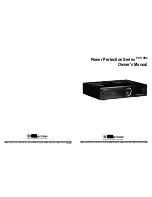
2 • Cresnet® Network
Design Guide — Doc. 9292A
Cresnet Device Definitions
A Cresnet network consists of three primary device categories: control systems, Cresnet servers
(masters) and Cresnet clients (slaves).
Control Systems
A control system supplies data to a combination of Cresnet clients, Cresnet distribution blocks,
or Cresnet hubs via its NET (Cresnet) port. Ethernet-to-Cresnet bridges can be added to a
Crestron control system to expand the size of the Cresnet network, creating isolated Cresnet
subnets that each behave as a Cresnet server with its own unique address space.
Certain Crestron control systems and Ethernet-to-Cresnet bridges also supply 24VDC power to
Cresnet clients.
Cresnet Servers
A Cresnet server is a connection to a control system that allows a control system program to
communicate with Cresnet clients. A Cresnet server supplies power and data to Cresnet clients
via its built-in Cresnet bus. The Cresnet bus distributes bidirectional data communication and
24VDC power to each wired client device over a single 4-conductor cable.
Cresnet Clients
A Cresnet client receives its power and data from a Cresnet server either directly (wired to the
Cresnet server) or indirectly (wired to a Cresnet distribution block or hub or daisy-chained to
another Cresnet client). Cresnet clients each have their own specific power draw requirements
that must be taken into consideration when designing the Cresnet network.
Examples of Cresnet clients include keypads, lighting controls, shade motors, thermostats, and
occupancy sensors.






























